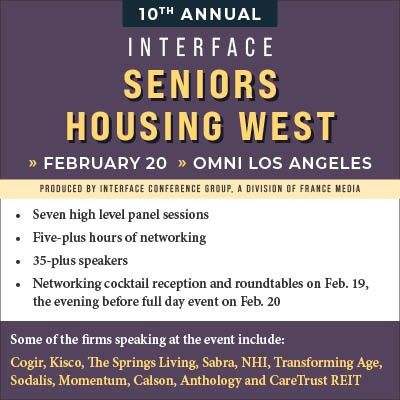By Susan Saldibar
During the pandemic, as residents seized upon technologies like tablets to connect to their loved ones at home, they were sending a message to this industry, loud and clear: Things have changed.
The experience of social isolation is something residents and families don’t ever want to feel again. Yet, it drove them not only to engage with technology, but to recognize its value. To think that only a few years ago enabling WiFi and handing out a few tablets checked the box. Now the stakes are much higher. Prospective residents transitioning to your assisted living community expect, at a minimum, the same level of connected lifestyle they can get from home – easy access, fast connections to what they need, and personalized choices. They know what they want. And they know the questions to ask.
“Absolutely Essential” or “Very Important” to Residents
So does Lisa Taylor, CEO for iN2L (a Foresight partner), who makes it her business to know what today’s senior living population wants and needs. “Resident engagement is in a period of change,” Lisa says. “Thanks to the pandemic, more communities are paying attention to social isolation and loneliness and how we can leverage technology to combat them.”
Their surveys, conducted earlier in the pandemic, bear this out. For instance, when asked about components that affect well-being, connection, and personalized activities rose to the top as “absolutely essential” or “very important”, with 66% of residents rating connecting to others and 73% rating activities specifically tailored to their interests that highly.
Pushing the Boundaries Past Person-Centered to Person-Directed Engagement
As we head into planning and budget season, Lisa suggests that communities conduct an evaluation of how their resident engagement strategy enables these critical elements of well-being and make room in the budget where necessary for technology tools to help. I asked her to share today’s “must-haves” for engagement that supports well-being.
Here’s what Lisa had to say:
1. Personalization
One-size-fits-all should no longer be your offering. Not everyone likes bingo and sing-alongs. People want experiences that are personalized; that allows them to tap into more purposeful activities. We have now come to expect personalization embedded in all digital interactions. So let’s shift our mindset to think that way about resident engagement. Does your engagement strategy give residents a data-driven personal experience? You have the data; you’ve been gathering it. How can you use it to personalize and tap into what excites each resident? It’s about taking what you’re gathering and making it usable in ways that add value to the residents’ lives.
2. Creating Opportunities for Friendships to Flourish
This can’t be overstated. It is the highest form of connectedness. Many residents have outlived spouses, so it’s even more important. Even before the pandemic, 40% of those in senior living communities said they were always or often lonely. Half of them said they never had a friend in the community. And yet, two-thirds said they want to make friends. Think about how engagement can create onramps for social connections. What do you need to add? How do you need to think about life enrichment roles a bit differently? It’s about enabling folks to connect with each other and engage based on common interests. It’s more important now than ever.
3. Putting Residents in the Driver’s Seat
Empowering elders gives them a sense of having something to look forward to; a feeling of autonomy as well as more opportunities for engagement and true connection. Think about pushing the boundaries from person-centered to person-directed engagement. That means shifting the paradigm from staff making all the decisions to supporting resident autonomy. It means removing the roadblocks that keep them from making more of their own choices. How can you give them access to easy engagement tools that also fit in with your own operational and staff workflows?
More Than Just “Nice Ideas”
These might sound like just nice ideas, but Lisa urges communities to understand that well-being is a key driver of resident and family satisfaction, and therefore, occupancy. “Leadership now has a growing awareness of the dangers of isolation and what is needed to combat it moving forward,” she says. “Executive-level support of driving and supporting the build-out of a new engagement framework that prioritizes well-being will not only help mitigate loneliness but also create a foundation for broader organizational success.”
Technology is enabling wellness in ways we’ve never seen before. Particularly as it relates to engagement with family, friends, and other residents. “A well-being-focused engagement framework can be best supported by a robust technology platform,” Lisa says. “That’s why iN2L is releasing a new end-to-end solution focused on connection for well-being later this year. We are excited to continue enabling even more meaningful, personalized engagement and connection experiences for older adults.”
iN2L has created a useful guide on how you can build a new resident engagement framework, which you can download here.
If you’d like to learn more about iN2L’s forthcoming solution in time for your 2022 planning, please contact them at [email protected].








